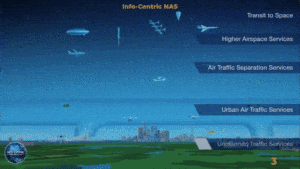
The Changing Landscape of Persuasion
Persuasion, in its essence, has always been integral to human interactions, but its character and application have morphed considerably over time. Its evolution has been marked by the shifts from aggressive, hard-sell tactics to a more nuanced, empathetic approach. Daniel Pink, in his seminal work “To Sell Is Human”, illuminates this transformation, revealing a reality where everyone, not just those in traditional sales roles, partakes in the act of persuasion. In today’s interconnected, information-dense society, persuasion permeates all corners of life—from convincing investors to back a startup, to inspiring students to engage with a challenging concept, to influencing policy change in the civic arena.
The landscape of persuasion now demands a more sophisticated understanding of human psychology, an empathetic ear, and an articulate voice. Persuasion is no longer a one-way street—it’s a dialogue, a dance. It is about building connections, fostering relationships, and facilitating change. It’s a delicate blend of art and science, interwoven with the threads of emotional intelligence and backed by the rigors of empirical research.
Attunement in Persuasive Presentations
One of the key concepts that Pink introduces in his book is the idea of ‘attunement’—the ability to tune in to others, to empathize and understand their perspectives. In the context of crafting persuasive presentations, attunement becomes the cornerstone of connecting with your audience.
Attunement begins with stepping out of one’s own mindset and stepping into the shoes of the audience. It’s about understanding their needs, desires, fears, and motivations. How do they perceive the world? What values and beliefs guide them? What are their expectations from your presentation? Answering these questions allows you to craft a narrative that resonates deeply with your audience.
To achieve attunement, presenters must master the skill of active listening. This involves not just hearing what your audience is saying, but understanding their emotions, body language, and unspoken cues. Active listening is especially important during Q&A sessions or discussions that follow the presentation.
Cultivating a sense of curiosity is another critical element of attunement. Be genuinely interested in your audience’s thoughts, opinions, and feedback. Encourage questions and foster a safe space for open dialogue. This not only provides valuable insights but also builds trust and rapport, making your audience more receptive to your message.
Empathy is at the heart of attunement. To truly understand your audience, you must be able to feel what they feel. This emotional connection can drive the way you design your presentation, making it more relatable and impactful.
Lastly, attunement also involves adapting to the mood and dynamics of the room. Be aware of the energy level of the audience and adjust your delivery style accordingly. If the audience seems disengaged, infuse more energy or interactivity into your presentation. If they seem overwhelmed, slow down and allow time for reflection.
Mastering attunement isn’t a quick or easy process—it requires patience, practice, and a genuine desire to understand and connect with others. Yet, it’s an investment that pays rich dividends, making your presentations not just informative and persuasive, but truly transformative.
Buoyancy and Resilience in Crafting Presentations
In “To Sell Is Human”, Pink discusses ‘buoyancy’ as the ability to stay afloat amidst an ocean of rejection. While the context of presentations is different, the principle of buoyancy translates into resilience—the ability to remain steadfast, to keep the audience engaged and influenced, even in the face of skepticism or criticism.
In the realm of presentations, resilience can manifest in several ways. The first is maintaining enthusiasm and energy throughout the presentation. The audience feeds off your energy. If you show resilience and a positive attitude, it can infectiously keep the audience interested and receptive.
Next, resilience is about handling tough questions or critiques. In interactive presentations, audiences may raise challenging questions or voice skepticism. Responding to these with grace, respect, and thoughtful answers can help maintain your credibility and keep your audience engaged.
It’s also important to remember that resilience isn’t just about withstanding pressures during the presentation—it’s about learning and improving from each experience. After the presentation, reflect on what worked and what didn’t. Seek feedback from the audience or observers and use this to refine your future presentations.
Developing resilience is an ongoing process. It takes time and practice to master this skill, but the rewards are immense. Not only can resilience enhance the effectiveness of your presentations, but it can also help you grow as a communicator and leader.
The Power of Clarity in Presentations
The third element that Pink emphasizes in his new ABCs of selling is ‘clarity’—the ability to help others see their situations in new, revealing ways and identify problems they might not have realized they had. For a presentation to be persuasive, it needs to offer clarity to the audience.
At its core, clarity in presentations revolves around two key elements: clear messaging and effective visualization. Clear messaging means delivering your points in a manner that is easy for your audience to understand. This often involves using simple language, avoiding jargon, and structuring your presentation in a logical and coherent manner. The goal is to ensure that your audience understands not just the ‘what’ but also the ‘why’ and the ‘how’ of your message.
Effective visualization, on the other hand, involves the use of visual aids to support and reinforce your message. This could be graphs, charts, images, videos, or other visual elements. Visual aids can help break down complex ideas, highlight key points, and make your presentation more engaging and memorable.
However, achieving clarity goes beyond just clear messaging and visualization. It also involves understanding your audience’s existing knowledge and perceptions and then building on this foundation. You need to take them on a journey from where they are now to where you want them to be.
In addition, clarity also implies being clear about the desired outcome or call-to-action of your presentation. What do you want your audience to think, feel, or do after your presentation? Being clear about this can help you design your presentation in a way that guides your audience towards this desired outcome.
Crafting a presentation with clarity is like shining a light on a path through a dense forest. It guides your audience, illuminates key points, and helps them see the destination clearly. And when the path is clear, the journey becomes enjoyable, meaningful, and impactful.
Inform: Leveraging Information in Presentations
When it comes to persuasive presentations, the use of accurate and relevant information plays an essential role. The first objective of a presentation is to inform the audience—to educate them about a problem, introduce them to a solution, or both.
To effectively inform, the data you present should be thoroughly researched and credible. Misinformation or inaccuracies can erode your credibility and affect the impact of your presentation. Your sources should be reliable and your facts checked for accuracy.
When presenting your information, structure it logically. Start with broad concepts, then narrow down to specifics. This “funnel” approach allows the audience to understand the broader context before delving into details.
But remember, information alone is insufficient to make a presentation persuasive. The key is to leverage this information—to interpret it, to draw insights from it, to build a compelling narrative around it. It’s about not just presenting data, but also explaining what it means and why it matters.
Inspire: Harnessing Emotions and Storytelling
Once your audience is informed, the next step is to inspire them. Inspiration triggers emotion, and emotion fuels action. A presentation that touches the heart is more likely to move the audience to action than one that only appeals to the intellect.
To inspire, harness the power of storytelling. Stories evoke emotions, create connections, and are remembered far longer than dry facts or figures. They give life to data and make your message relatable. A well-told story can illustrate your points, create empathy, and incite the motivation to act.
In your stories, showcase real-life scenarios, introduce characters your audience can relate to, and create narratives that align with your message. Show the challenges, the journey, the triumphs. Make your audience feel the struggle, the resolve, the victory.
Additionally, your own enthusiasm and passion can serve as inspiration. If you believe in your message and convey it with genuine passion, your audience will sense it and be more likely to be influenced.
In essence, to inspire is to create a spark that lights the path for your audience. When your presentation resonates emotionally, it becomes more than just an exchange of information—it becomes a transformative experience.
Influence: Calls to Action and Decision Facilitation
After informing and inspiring your audience, the final piece of the persuasive presentation puzzle is to influence them. Influence is about facilitating decisions, motivating your audience to act upon the information and inspiration you’ve imparted.
Influence is often crystallized through a call-to-action (CTA)—a clear, specific directive that tells your audience what you want them to do next. Whether it’s to invest in a project, try a new process, or adopt a new perspective, your CTA should be explicit, concise, and compelling.
But a CTA is not about coercion—it’s about facilitating decision-making. It ties back to the clarity that Pink highlights. As the presenter, your job is to illuminate the path, guide your audience toward the decision that you believe is best, but ultimately leave the choice in their hands.
To facilitate decisions, anticipate objections and address them preemptively. Outline the benefits, explain the reasons, dispel the doubts. Reinforce your points through evidence and stories. Make it easier for your audience to say ‘yes’ to your CTA.
Remember, influence is not a one-off task—it’s an ongoing process. The seeds of influence you sow during your presentation can bloom long after your speech has concluded.
The Synergy of Informing, Inspiring, and Influencing
As we wind down this journey through the art of crafting persuasive presentations, we find ourselves at the nexus of informing, inspiring, and influencing. These three elements, much like the chords of a well-tuned guitar, resonate together to create a symphony of persuasion.
Informing equips your audience with knowledge, providing a solid foundation upon which to build your case. Inspiring breathes life into this knowledge, creating an emotional connection that motivates your audience to care about your message. And finally, influencing nudges them towards action, leveraging the knowledge and emotion to drive decision-making.
These elements do not exist in silos—they interplay and reinforce each other. Information becomes meaningful when it’s infused with inspiration, and inspiration becomes actionable when guided by influence. It’s this synergy that makes your presentation not just a transmission of ideas, but a transformative journey for your audience.
As we reflect on Pink’s insights from “To Sell Is Human”, we realize that the principles of attunement, buoyancy, and clarity don’t just apply to sales—they form the bedrock of any persuasive communication, including presentations.
Crafting persuasive presentations is an art, but it’s also a skill—one that can be honed with understanding, practice, and patience. As we strive to master this skill, let’s remember that at the heart of every presentation is a simple, human desire: to connect, to resonate, to make a difference.
And with each presentation we craft, each audience we touch, we don’t just sell an idea—we share a piece of ourselves. And that, truly, is the art and power of persuasive presentations.
Start
Armed with knowledge, it’s time to act. Start small. Find an idea, find an audience. Talk to them, listen more. Understand them—this is attunement. Craft your tale, keep it simple and clear. That’s clarity. Meet resistance head on, stay firm, stay positive. This is buoyancy. Inform, inspire, influence. Practice. Take criticism, learn, refine. Speak again. Let every word, every pause, every gesture be a purposeful note in your symphony of persuasion. Don’t chase perfection, chase connection. The art of presentation isn’t conquered in a day, but each sunrise brings a chance to be better.
Inform: When preparing your next engineering presentation, focus on the informational aspect. Research thoroughly, ensure accuracy, and structure your content logically. Use data and evidence to support your points.
Inspire: Incorporate storytelling in your presentation. Link your engineering concepts with real-world examples, case studies, or personal experiences. Show passion and enthusiasm in your delivery.
Influence: Define a clear call-to-action for your presentation. During the presentation, build a case for this action, address potential objections, and guide your audience towards the decision.
Engineers are the masters at solving problems and pushing the boundaries of what’s possible in aerospace. The problem is showcasing the potential of these breakthroughs to the wider audience. Having delivered hundreds of explainer videos, technical presentations, and engaging websites, KAIA’s proven methodology will bring your projects to light in the most compelling way, underlining their real-world benefits. KAIA will reduce risk by ensuring your groundbreaking innovations get the recognition they deserve.
We invite you to take the next step and explore how clear communication can elevate your work. When you’re ready, schedule a strategy session with us. Let’s embark on this journey of discovery together, amplifying the reach and understanding of your valuable contributions to aerospace.






